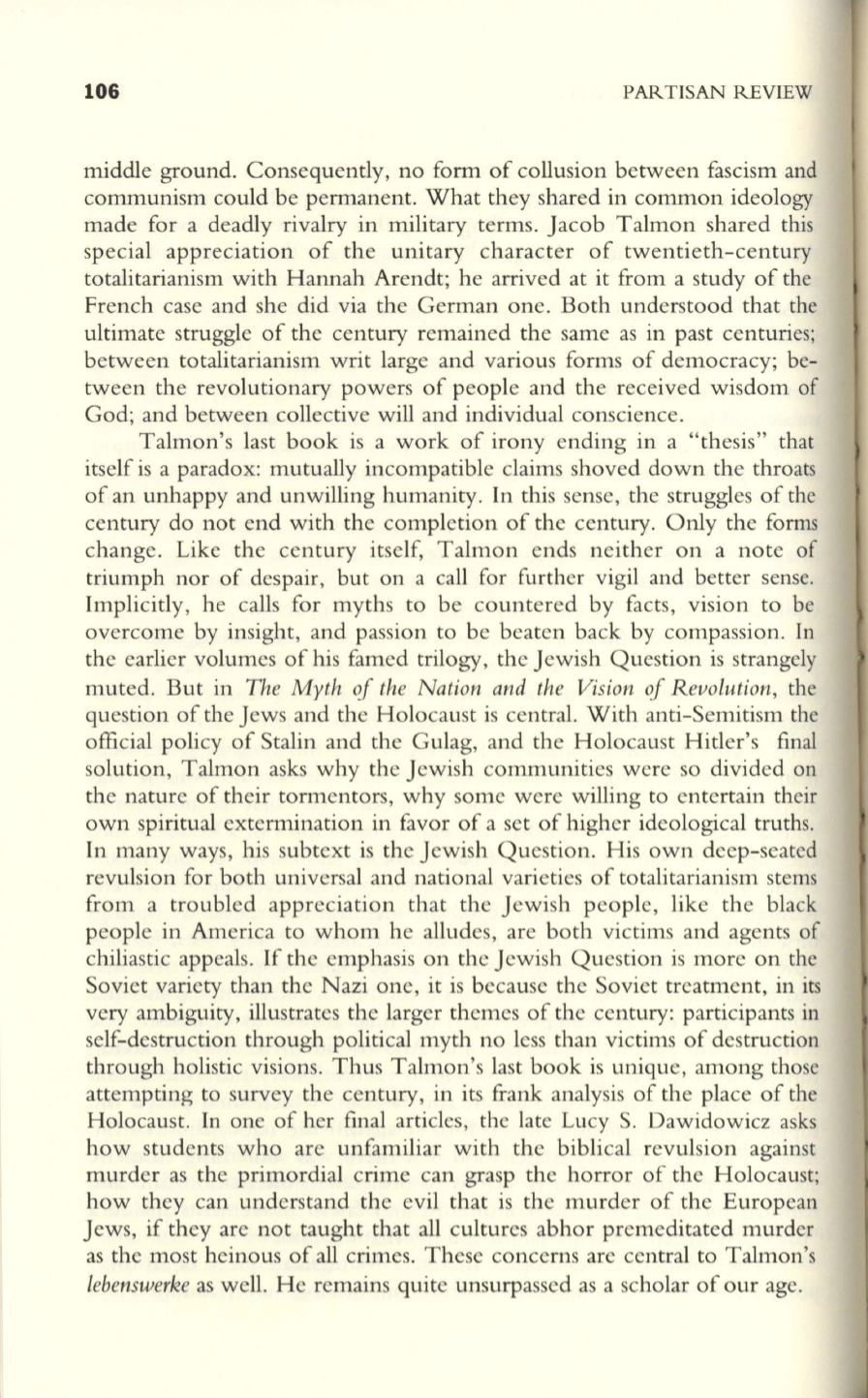
106
PARTISAN REVIEW
middle ground. Consequently, no form of collusion between fascism and
communism could be permanent. What they shared in common ideology
made for a deadly rivalry in military terms. Jacob Talmon shared this
special appreciation of the unitary character of twentieth-century
totalitarianism with Hannah Arendt; he arrived at it from a study of the
French case and she did via the German one. Both understood that the
ultimate struggle of the century remained the same as in past centuries;
between totalitarianism writ large and various forms of democracy; be–
tween the revolutionary powers of people and the received wisdom of
God; and between collective will and individual conscience.
Talmon's last book is a work of irony ending in a "thesis" that
itself is a paradox: mutually incompatible claims shoved down the throats
of an unhappy and unwilling humanity. In this sense, the struggles of the
century do not end with the completion of the century. Only the forms
change. Like the century itself, Talmon ends neither on a note of
triumph nor of despair, but on a call for further vigil and better sense.
Implicitly, he calls for myths to be countered by facts, vision to be
overcome by insight, and passion to be beaten back by compassion. In
the earlier volumes of his famed trilogy, the Jewish Question is strangely
muted. But in
The Myth oj the Nation and the Vision oj Revolution,
the
question of the Jews and the Holocaust is central. With anti-Semitism the
official policy of Stalin and the Gulag, and the Holocaust Hitler's final
solution, Talmon asks why the Jewish communities were so divided on
the nature of their tormentors, why some were willing to entertain their
own spiritual extermination in favor of a set of higher ideological truths.
In many ways, his subtext is the Jewish Question. His own deep- seated
revulsion for both universal and national varieties of totalitarianism stems
from a troubled appreciation that the Jewish people, like the black
people in America to whom he alludes, are both victims and agents of
chiliastic appeals. If the emphasis on the Jewish Question is more on the
Soviet variety than the Nazi one, it is because the Soviet treatment, in its
very ambiguity, illustrates the larger themes of the century: participants in
self-destruction through political myth no less than victims of destruction
through holistic visions. Thus Talmon's last book is unique, among those
attempting to survey the century, in its frank analysis of the place of the
Holocaust. In one of her final articles, the late Lucy S. Dawidowicz asks
how students who are unfamiliar with the biblical revulsion against
murder as the primordial crime can grasp the horror of the Holocaust;
how they can understand the evil that is the murder of the European
Jews, if they are not taught that
all
cultures abhor premeditated murder
as the most heinous of
all
crimes. These concerns are central to Talmon's
lebenswerke
as well. He remains quite unsurpassed as a scholar of our age.


